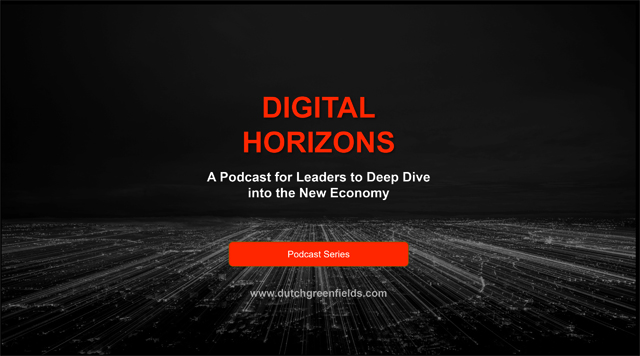In a world obsessed with speed, growth, and execution, one discipline is consistently underestimated—reflection. Yet the most successful leaders, teams, and organizations all share one hidden habit: they pause on purpose to learn. That pause is called a retrospective.
A retrospective is not about looking backward with regret. It is about looking forward with clarity. It transforms experience into insight, insight into improvement, and improvement into sustainable performance. For leaders, executives, founders, and teams, the retrospective is not a “nice-to-have” ritual—it is a strategic advantage.
This article explores the meaning and purpose of the retrospective, why leaders and teams should use it frequently, why the end and beginning of the year is a powerful moment for organizational reflection, the most effective retrospective methods for leadership and operating teams, how to organize a successful retrospective, key takeaways for leaders, and an inspiring conclusion to ignite action.
1. What Is a Retrospective?
A retrospective is a structured moment of reflection in which a team, leadership group, or organization deliberately asks:
- What did we intend to do?
- What actually happened?
- What did we learn?
- What will we do differently next time?
It originates from Agile and Lean ways of working, but its roots are far older—military debriefs, scientific review cycles, and even ancient philosophical traditions. At its core, a retrospective is about turning experience into wisdom.
A retrospective is:
- Not a performance review
- Not an accountability tribunal
- Not a complaint session
It is:
- A learning ritual
- A trusting conversation
- A system-improvement workshop
- A leadership instrument for growth
2. The Purpose of a Retrospective
The retrospective serves five critical purposes:
1. Learning
It captures real-world knowledge that no dashboard can reveal.
2. Improvement
It identifies what to start, stop, and continue.
3. Alignment
It recalibrates shared understanding after action.
4. Trust & Safety
It creates psychological safety by allowing honest dialogue without blame.
5. Momentum
It prevents stagnation by institutionalizing adaptation. Without retrospectives, organizations repeat the same mistakes with greater efficiency.
3. Why Leaders and Teams Should Do Retrospectives Frequently
High-performing organizations do not rely on annual reflection alone. They reflect:
- Every 2–4 weeks (teams & sprints)
- Quarterly (strategy & execution cycles)
- Annually (enterprise-wide learning & renewal)
Frequent retrospectives help leaders:
- Detect small problems before they become systemic failures
- Continuously refine strategy
- Strengthen leadership culture
- Increase employee engagement
- Accelerate innovation through rapid learning
In fast-moving markets, learning speed beats execution speed.
4. Why the End or Beginning of the Year Is a Perfect Moment for a Retrospective
The transition between years is a natural inflection point—a psychological reset for both individuals and organizations. At this moment:
- Strategy is reviewed
- Budgets are reset
- Leadership shifts occur
- Markets evolve
- Priorities change
A year-end or year-start retrospective enables leaders to:
- Close the previous chapter consciously
- Prevent repeating structural mistakes
- Align leadership teams on shared learning
- Translate experience into future strategy
- Build next-year priorities on evidence, not assumptions
Instead of asking:
“What should we do next year?”
A retrospective first asks:
“What did we learn from this year—and what must that change?”
Only after that does real planning begin.
5. Retrospective Methods for Leaders, Boards & Teams
Different contexts demand different methods. Here are some powerful, proven formats, from boardroom-level to team execution:
1. Start – Stop – Continue
Best for: Leadership teams, boards, management teams
- What should we start doing?
- What should we stop doing?
- What should we continue doing?
Simple, powerful, and highly actionable.
2. Sailboat Retrospective
Best for: Strategy, transformation, and culture
- Wind = What pushed us forward?
- Anchor = What slowed us down?
- Rocks = What risks did we face?
- Island = Where are we heading?
Excellent for leadership vision renewal.
3. Timeline Retrospective
Best for: Annual reviews, mergers, major programs
- Map the year along a timeline
- Identify key highs, lows, turning points
- Extract patterns and root causes
Creates deep shared understanding.
4. 4Ls – Liked, Learned, Lacked, Longed For
Best for: Team retrospectives, venture squads
- What did we like?
- What did we learn?
- What did we miss?
- What do we want more of?
Balances emotion and analysis.
5. Data-Driven Retrospective
Best for: Executive teams, scale-ups, investors
Uses:
- KPIs
- Financial results
- Growth metrics
- Product performance
Combined with reflection questions.
6. Future-Back Retrospective
Best for: Founders and strategy teams
- Imagine it’s one year from now and success has happened
- What did we change compared to last year?
- What behaviors shifted?
- What did we stop tolerating?
Bridges retrospective with strategic foresight.
6. How to Organize a Powerful Retrospective
A successful retrospective does not happen by accident. It must be designed with intent.
Step 1: Define the Purpose
Choose one:
- Learning
- Strategy input
- Culture improvement
- Team performance
- Transformation reflection
Never mix too many goals.
Step 2: Choose the Right Participants
- Board → strategic and governance lens
- Leadership team → organizational system lens
- Operating team → execution and collaboration lens
Step 3: Create Psychological Safety
Set clear rules:
- No blame
- No hierarchy in dialogue
- Facts over opinions
- Curiosity over judgment
Without safety, you get compliance—not truth.
Step 4: Structure the Session
A strong retrospective always follows this flow:
- Set the stage – intent + safety
- Collect perspectives – facts, feelings, data
- Generate insights – patterns, root causes
- Decide improvements – 2–5 concrete actions
- Close with commitment – ownership & follow-up
Step 5: Turn Reflection into Action
Every retrospective must end with:
- Named owners
- Clear actions
- Short feedback loops
- Follow-up dates
No action = no value.
7. Key Takeaways for Leaders-Executives & Founders
- The retrospective is a leadership tool, not a team ritual.
- Reflection is a competitive advantage in volatile markets.
- Year-end and year-start retrospectives outperform traditional planning.
- Psychological safety determines the quality of truth you receive.
- Data + dialogue creates the strongest insights.
- Improvement beats perfection.
- What you tolerate becomes your culture.
- What you reflect on becomes your future.
From Reflection to Renewal
The organizations that will win the next decade are not the ones with the boldest slogans or the biggest budgets—but the ones that learn the fastest and adapt the deepest. A retrospective is not about the past. It is about resetting direction, renewing ownership, and re-anchoring purpose. When leaders initiate retrospectives, they send a powerful cultural signal:
“We are a learning organization. We grow through truth. We improve through reflection.”
And that is how extraordinary cultures are built—not through perfection, but through progress—again and again. So let this be your moment as a leader.
Not to push harder.
Not to control tighter.
Not to plan longer.
But to pause with courage—and restart with clarity. Because every great transformation begins not with a decision to move faster, but with the wisdom to look back properly before moving forward boldly.
About Rowdy Bijland
Rowdy is a strategic and creative thinker. He acts as a digital business partner with the mission to support leaders, their teams and organizations, to drive digital business strategy, innovation and transformation execution, with the aim to maximize potential and to contribute to the creation of sustainable value and meaningful impact. He released his first publication “Digital Disruption: A leader’s Guide for Business Development in the Digital Age” available both as paperback and eBook in the shop. In addition, he released a digital masterclass “Leading Digital Disruption” on Udemy. He is facilitator, moderator and keynote speaker for companies and organizations. Furthermore, Rowdy offers 1:1 digital business coaching for leaders worldwide.
To connect with Rowdy, please follow him on Linkedin.







